Living in a small urban home doesn’t mean you need to sacrifice style or comfort. Your compact living room can become a beautiful and functional space with the right design choices.

Smart design tricks and strategic furniture placement can make your small living room feel twice as spacious while maintaining a cozy atmosphere. Many urban dwellers face the challenge of limited square footage, but these constraints often lead to creative solutions that maximize every inch of available space.
1) Maximise Space with Multi-Functional Furniture
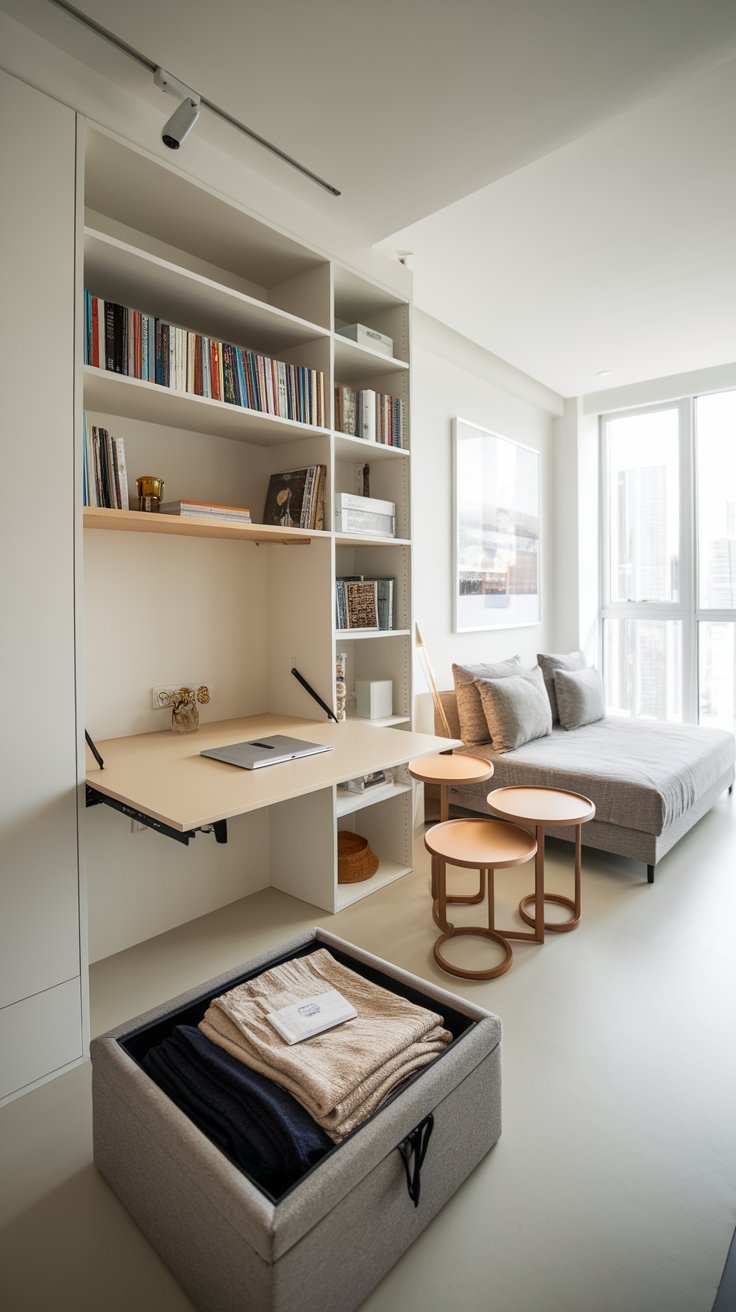
Smart furniture choices can transform your small living room into a versatile space. Multi-functional pieces serve multiple purposes while taking up minimal room.
A bookshelf with a fold-down table offers both storage and an extra surface when needed. You can use it as a desk, dining table, or workspace without permanently occupying floor space.
Look for ottomans with hidden storage inside. These pieces work as seating, footrests, and coffee tables while keeping blankets, magazines, or games neatly tucked away.
Consider a sofa bed or sleeper sectional for your living room. This gives you a comfortable seating area during the day and a guest bed at night.
Nesting tables are perfect space-savers. You can spread them out when hosting guests and stack them together when you need more floor space.
Choose coffee tables with built-in storage drawers or shelves. These pieces help you organize remote controls, books, and other items while maintaining a clean look.
Murphy-style desks that fold flat against the wall work great in living rooms. You can pull them down when working and hide them away during social gatherings.
2) Brighten Your Living Room with a Light Colour Palette
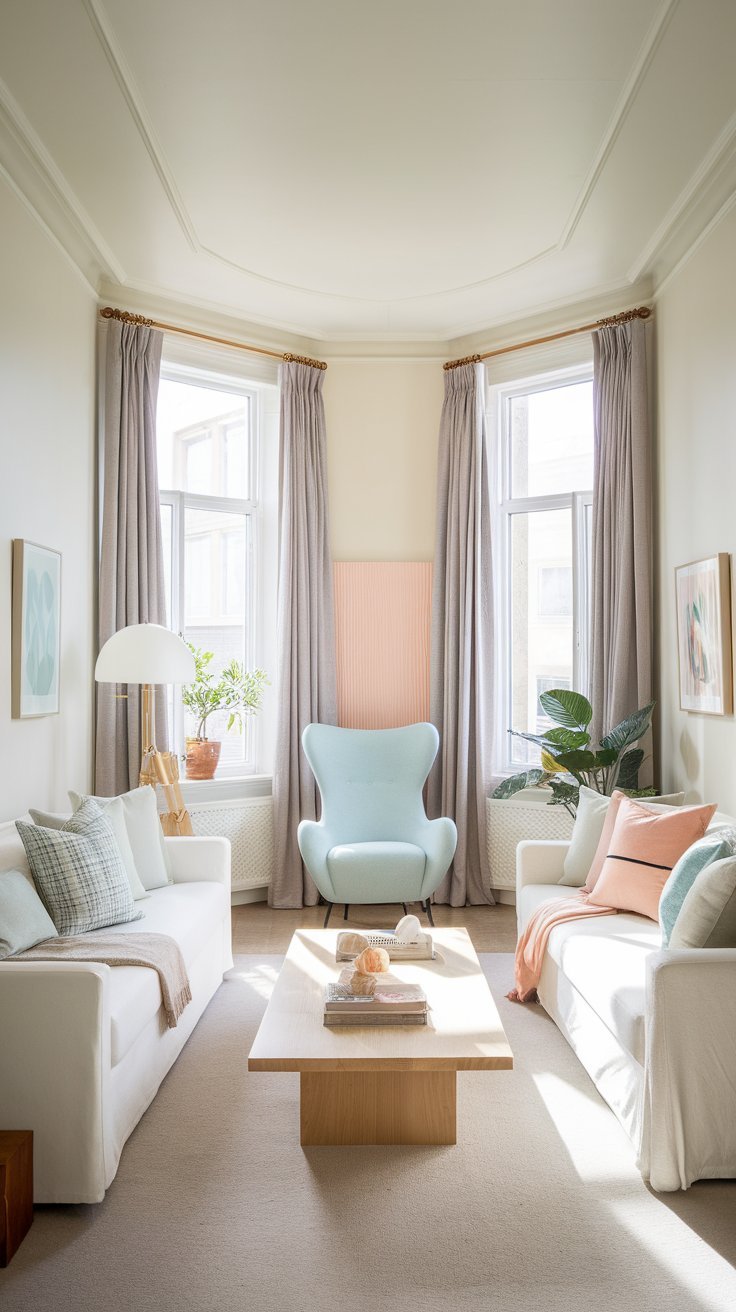
Light colors can make your small living room feel more spacious and welcoming. White walls reflect natural light and create an airy atmosphere that tricks your eye into seeing a larger space.
Soft neutrals like cream, beige, and light gray work well for small rooms. These shades provide a clean backdrop while maintaining a warm, inviting feel.
Consider pale pastels such as light blue, mint green, or blush pink to add subtle color without overwhelming the space. These gentle tones keep the room feeling open while adding personality.
Paint the ceiling the same color as the walls to create a seamless look. This technique removes visual barriers and helps the room feel taller.
Keep trim and moldings in light colors too. White or off-white trim creates clean lines without breaking up the space into smaller sections.
Add depth by using different shades of the same light color throughout the room. Mix textures and finishes to create interest while maintaining the airy feel of your color scheme.
Pair your light walls with furniture in similar tones to maintain the spacious feeling. Choose pieces in cream, white, or light wood finishes to blend seamlessly with your palette.
3) Use Mirrors to Enhance Light and Space
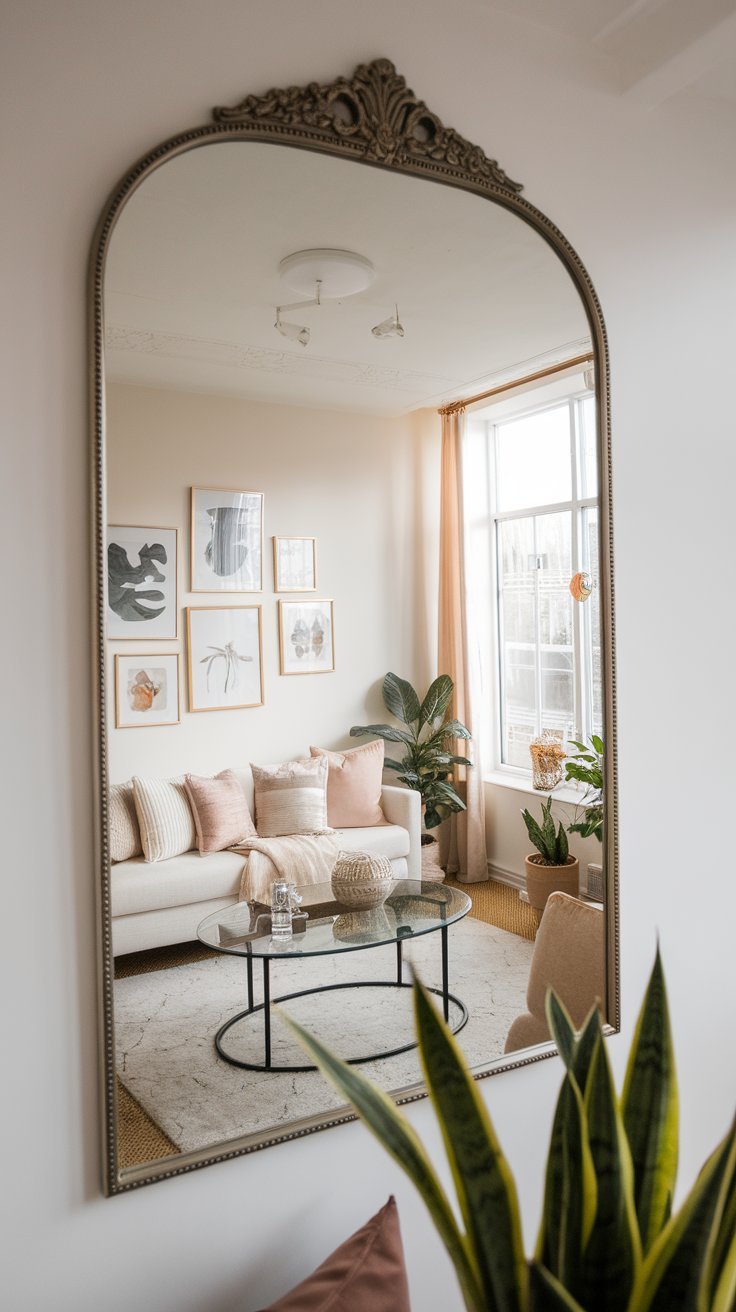
Mirrors work like magic in small living rooms. They bounce natural light around the space and create an instant feeling of openness.
Place a large mirror directly across from your window to maximize the flow of daylight. This setup doubles the amount of natural light and makes your room feel twice as bright.
Choose strategic spots for your mirrors where they can capture and reflect the most light. The wall opposite your brightest window is often the perfect place to start.
You can mix different mirror sizes to create interest. Try hanging a main large mirror as your focal point, then add smaller decorative mirrors nearby to spread light throughout the space.
Mirror placement height matters too. Position them at eye level or slightly lower to reflect the most useful views and create depth in your room.
Think about what your mirrors will reflect. Point them toward pretty decor items or green plants rather than blank walls or cluttered areas.
Consider adding a mirror gallery wall. Group several mirrors of various shapes and sizes together to multiply the light-reflecting effect while creating an artistic display.
4) Optimise Storage with Vertical Shelving
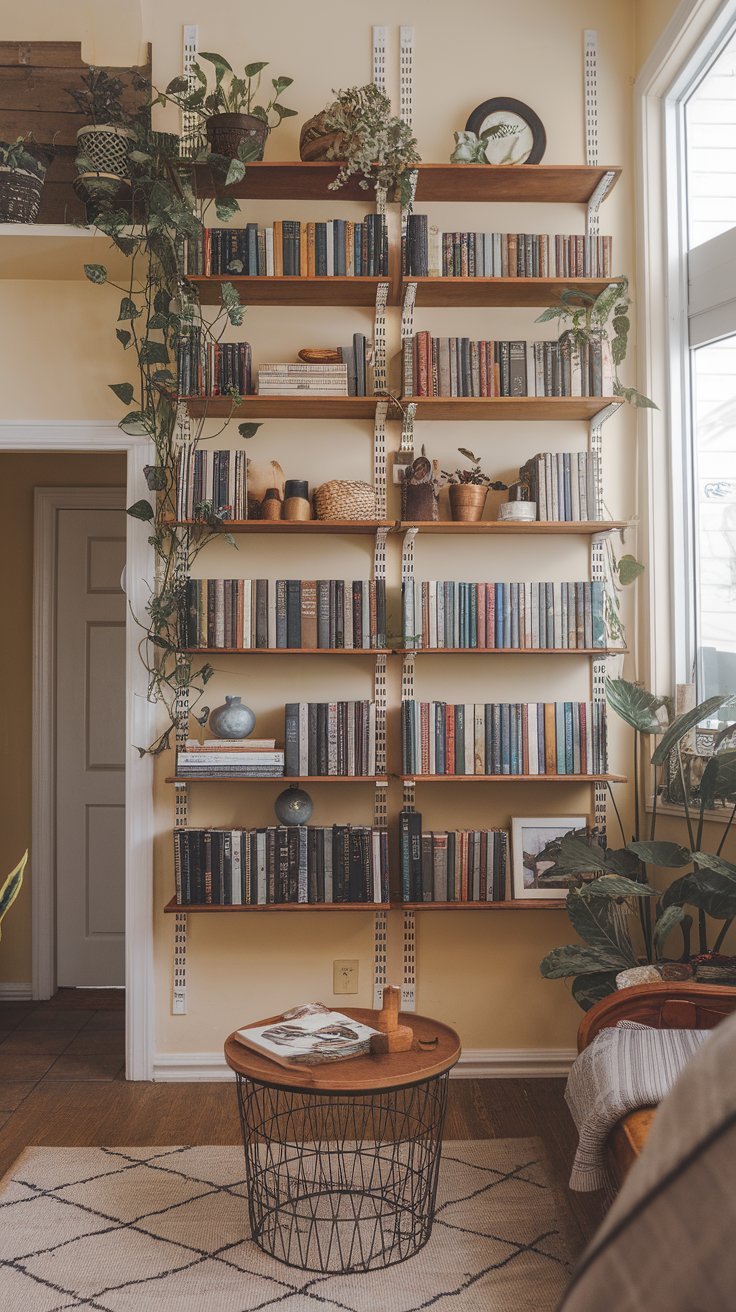
Small living rooms need smart storage solutions. Tall bookshelves and cabinets make excellent use of vertical wall space while keeping your floor area open and uncluttered.
Install floor-to-ceiling shelving units to maximize storage capacity. These tall shelves can hold books, decorative items, and storage boxes while creating a striking visual element that draws the eye upward.
Choose sleek, minimalist shelving designs that won’t overwhelm your space. Light-colored or white shelves blend seamlessly with walls and create an airy feel in compact rooms.
Place your most attractive items at eye level on the shelves. Store less frequently used items on higher shelves, and keep everyday essentials within easy reach on lower shelves.
Consider installing built-in shelves in alcoves or recessed areas. This option saves precious floor space while providing custom storage that fits your room’s exact dimensions.
Add some personality to your shelving arrangement with a mix of books, plants, and decorative objects. Keep the display simple to avoid a cluttered appearance.
Remember to secure tall shelves properly to the wall for safety. This step is essential, especially in homes with children or pets.
5) Embrace Minimalist Décor for a Clutter-Free Look
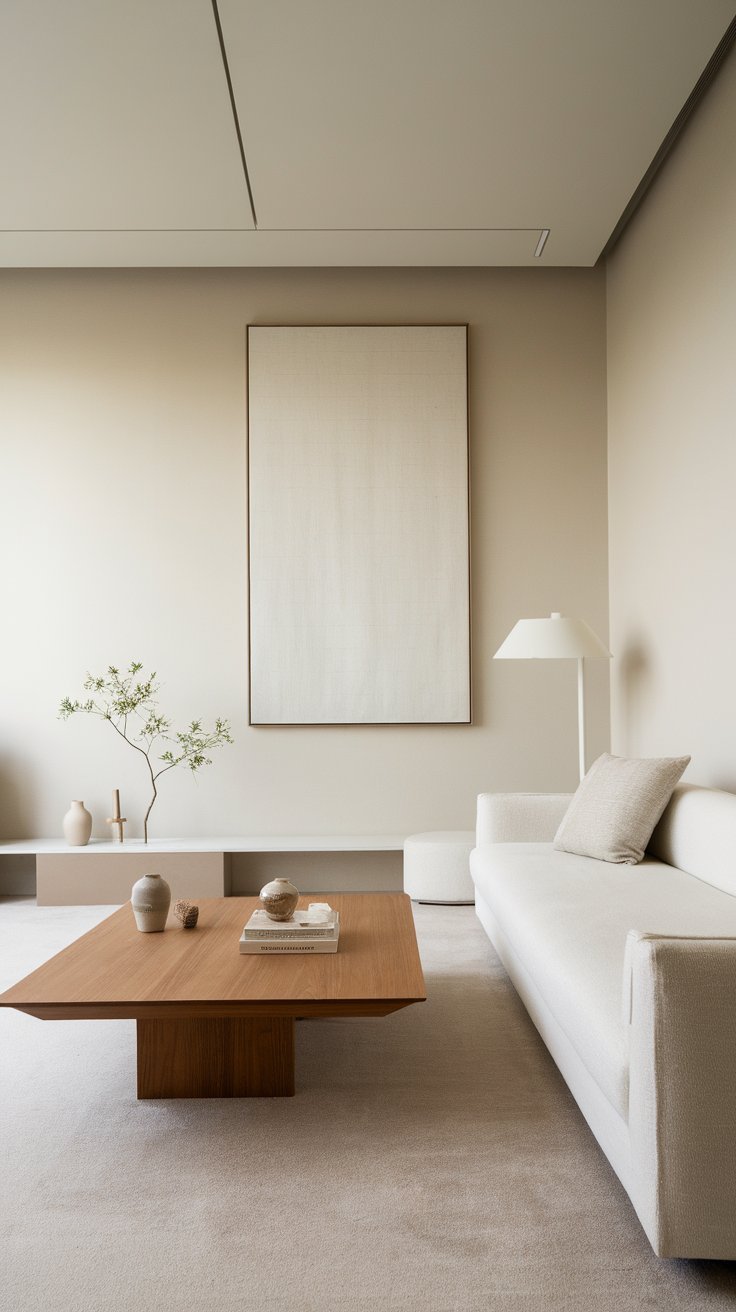
Minimalist decor creates a calm and peaceful small living room by removing unnecessary items. Start by choosing just a few key pieces that serve a clear purpose in your space.
Pick simple furniture with clean lines and neutral colors. A sleek sofa, a basic coffee table, and one accent chair might be all you need for comfortable seating.
Storage is essential in a minimalist room. Choose furniture that includes hidden storage like ottomans or cabinets to keep everyday items out of sight.
Keep your walls simple with one focal piece of art rather than multiple small items. Empty wall space helps a small room feel more open and relaxing.
Limit decorative objects to 3-5 meaningful pieces. Display them with plenty of space between each item to let them stand out properly.
Stick to a neutral color scheme with whites, grays, or earth tones. Add depth through different textures rather than bold patterns or colors.
A minimalist approach means being selective about what you bring into your space. Before adding new items, ask yourself if they serve a real purpose or bring true value to your room.
6) Unify Your Space with a Large Area Rug
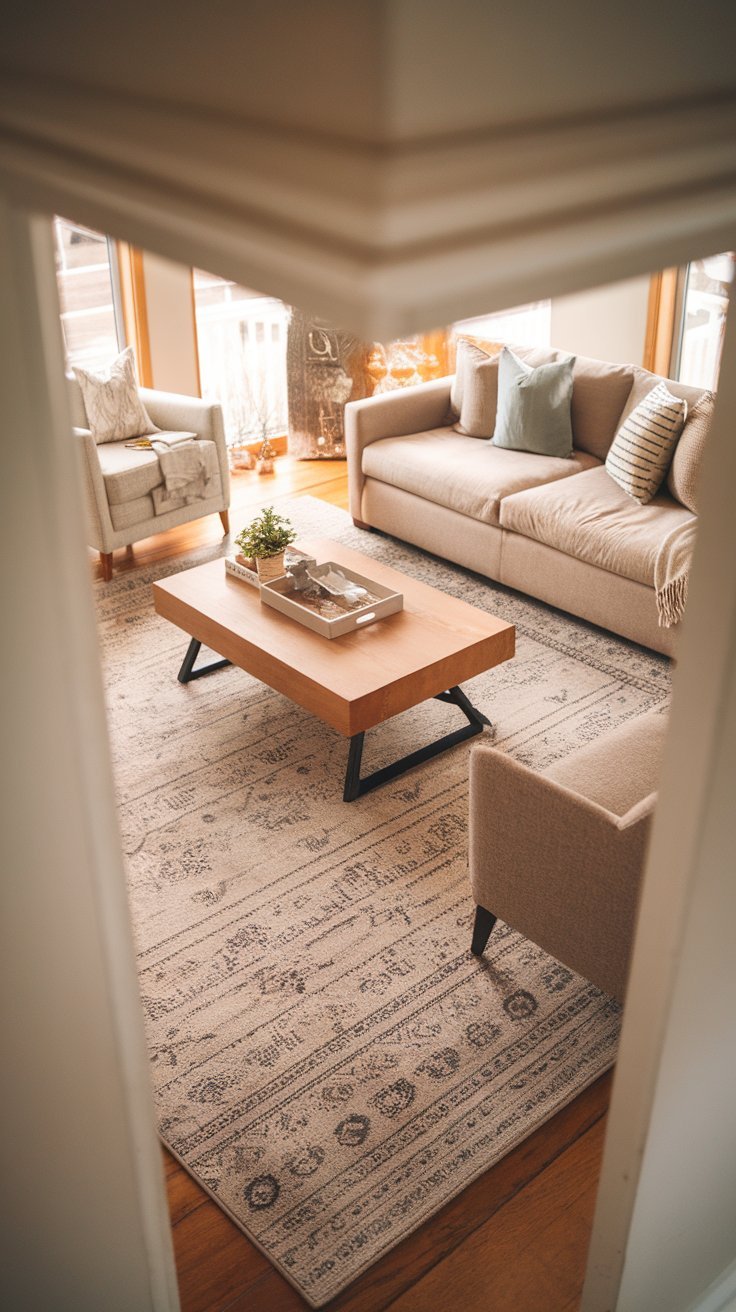
A large area rug serves as the foundation for your small living room’s design. It creates a defined space that brings all your furniture pieces together into one unified arrangement.
Place your rug in the center of the room, making sure it extends under the main seating pieces. Leave about 12-18 inches of floor space between the rug edges and walls to create breathing room.
The right rug size makes your space feel more organized and intentional. For most small living rooms, an 8×10 foot rug works well to anchor your seating area without making the room feel cramped.
Choose a rug with simple patterns or solid colors that match your existing decor. Light-colored rugs can make your room feel bigger and brighter, while darker rugs add warmth and coziness.
Make sure your rug fills most of the seating area, but doesn’t press directly against walls. This technique helps define your conversation zone while maintaining good flow throughout the space.
A well-placed area rug also adds comfort and warmth to your living room. It creates an inviting atmosphere and helps absorb sound, making your space feel more comfortable and lived-in.
7) Create Sleek Storage with Floating Cabinets
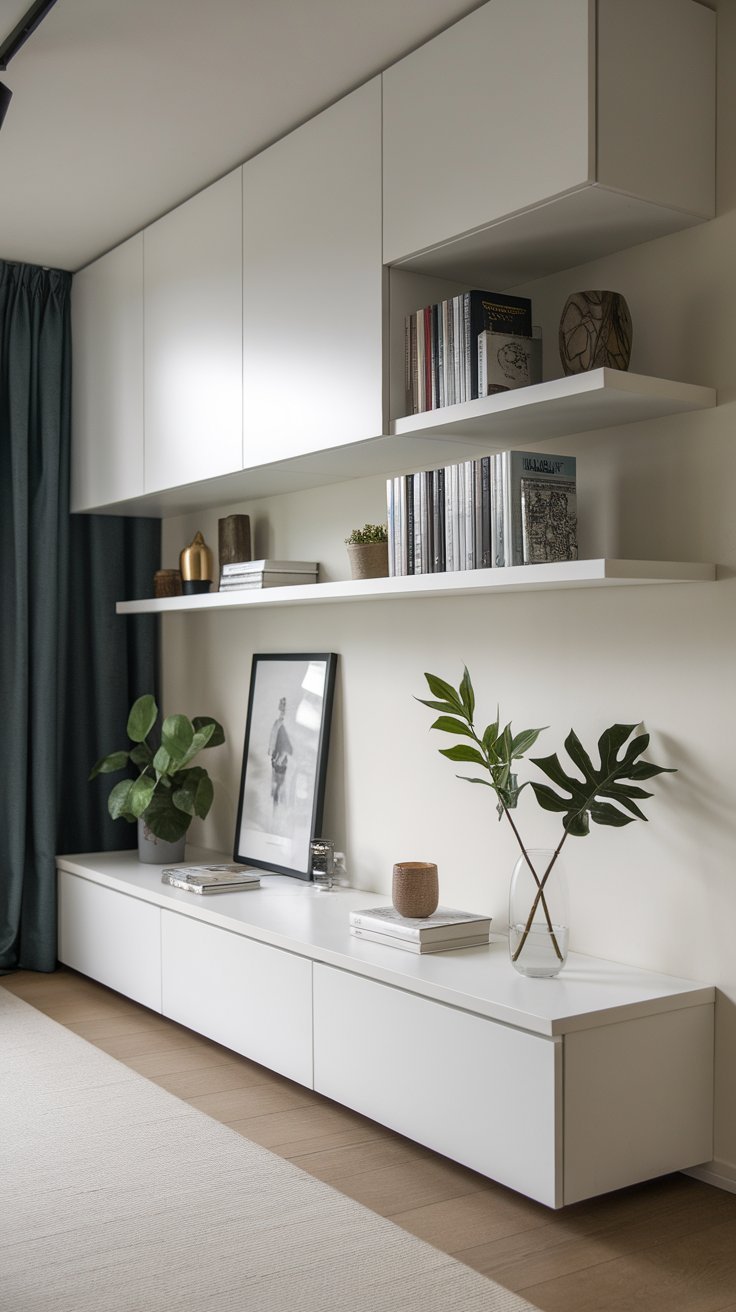
Floating cabinets give your small living room a modern, streamlined look while maximizing storage space. These wall-mounted units create visual lightness since they don’t touch the floor.
You can use floating cabinets to store books, electronics, games, and other items that might otherwise clutter your space. The clean lines help maintain an organized appearance.
Pick cabinets that match your existing decor style and color scheme. White or light-colored units work well to keep the room feeling open and airy.
Install the cabinets at a comfortable height that allows easy access while maintaining enough space underneath for other furniture pieces. The empty space beneath floating cabinets creates an illusion of more floor area.
Consider combining floating cabinets with matching floating shelves above them for a cohesive look. This setup provides both closed storage for items you want hidden and open display space for decorative pieces.
Make sure to secure the cabinets properly to wall studs for safety. If you rent your home, check with your landlord about installation requirements first.